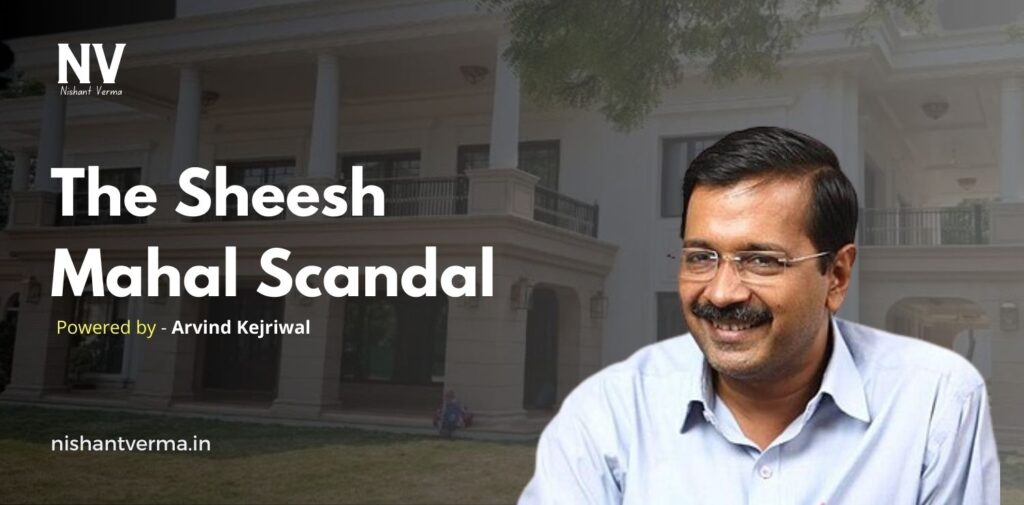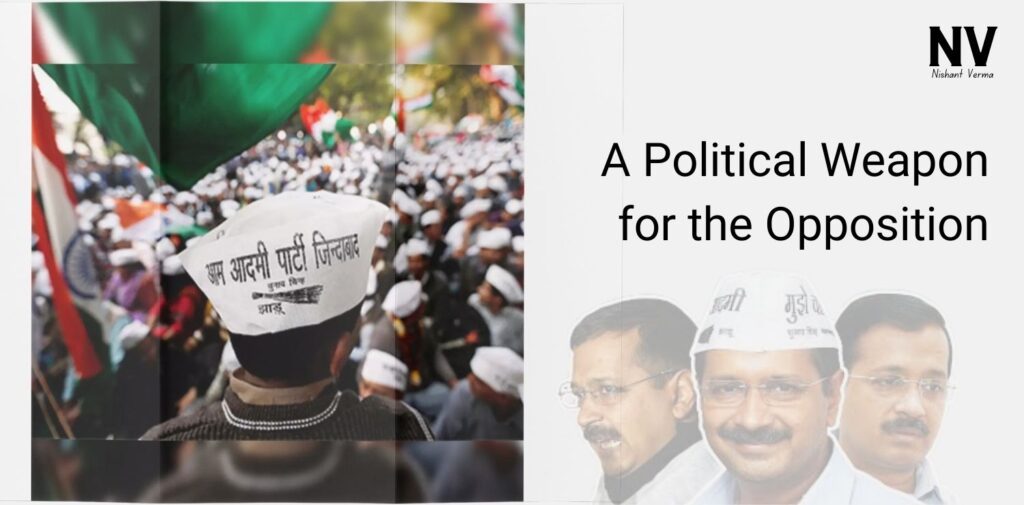In recent days, Arvind Kejriwal, the Chief Minister of Delhi, has found himself in a fresh controversy involving a luxurious bungalow in Civil Lines, famously dubbed “Sheesh Mahal.” The issue revolves around Kejriwal’s refusal to hand over the keys of this lavish residence to the Public Works Department (PWD), despite the government’s decision to reallocate the property. The BJP has jumped on the issue, accusing the AAP government of engaging in yet another act of “drama” and raising questions about why the Chief Minister is so unwilling to let go of this residence.
But what lies beneath this seemingly mundane tussle over a house? Why is the issue gaining so much political traction? More importantly, why is Kejriwal, who has built his image as a people’s leader, being so protective of this opulent residence?
The Sheesh Mahal Controversy
The property in question gained notoriety during the COVID-19 pandemic when it was revealed that significant taxpayer money had been spent on its renovation. Allegations surfaced that the AAP government had sanctioned over ₹45 crore for extravagant upgrades, which included the installation of Italian marble, a swimming pool, and expensive amenities. The public was understandably outraged, given the financial difficulties faced by Delhi residents during the pandemic. This opulence seemed a far cry from the Aam Aadmi Party’s core values of austerity and transparency.
The BJP has been relentless in attacking Kejriwal on this issue, accusing him of living in a palace while preaching simplicity. The party’s leaders have labeled this bungalow “Sheesh Mahal,” sarcastically likening it to royal indulgence, and have questioned how the party, which rose to power on the promise of clean governance, could justify such lavish spending.

Why is Kejriwal Holding On?
Despite being under pressure, Kejriwal has refused to relinquish control over the Sheesh Mahal, raising questions about his motives. The BJP has accused him of “unofficially privatizing” a government property by not handing it over to the PWD, despite repeated requests. In a stinging rebuke, BJP leaders have questioned why a Chief Minister, who doesn’t officially get a residence in Delhi, is so attached to this specific bungalow.
One theory floated by opposition parties is that Kejriwal fears losing the sheen of his political stature if he moves out of the luxurious residence. The symbolism of living in such a high-end property contrasts sharply with the AAP’s image of being a party for the common man.
Furthermore, it suggests that Kejriwal is unwilling to give up the comfort and prestige associated with the Sheesh Mahal, even as his government touts the virtues of austerity in public.
A Political Weapon for the Opposition
For the BJP, this situation has become a golden opportunity to attack Kejriwal and his party. The party has dubbed the AAP’s defense of the bungalow as “nautanki” or drama, accusing Kejriwal of hypocrisy and of trying to escape accountability. The BJP has repeatedly demanded that the AAP government come clean about the funds spent on the renovation and justify why such an extravagant property is necessary for the Chief Minister.
The controversy has also allowed the BJP to divert attention away from its own challenges in the capital, such as public dissatisfaction with certain policies. By keeping the focus on the Sheesh Mahal scandal, the BJP can undermine the AAP’s credibility while avoiding direct scrutiny of its own governance issues.

Kejriwal’s Silence: A Strategic Move?
Interestingly, Kejriwal has remained relatively quiet about the Sheesh Mahal controversy. While his spokespersons have issued statements defending the renovations as necessary upkeep for an official residence, Kejriwal himself has not addressed the issue head-on. His silence could be a deliberate strategy to prevent the issue from escalating further, especially since engaging in a full-blown public spat with the BJP might lead to more revelations about the opulence of his lifestyle.
Alternatively, his refusal to engage could signal a recognition that any explanation might fall flat in the face of public outrage. Kejriwal’s image as a man of the people has taken a hit, and addressing the issue could only serve to highlight the gap between his public persona and the reality of his private life.

Conclusion: The Need for Accountability
Ultimately, the Sheesh Mahal controversy is about more than just a bungalow. It raises critical questions about the transparency, integrity, and accountability of those in power. Kejriwal, who has built his career on criticizing corruption and lavish lifestyles in politics, is now facing accusations of the same behavior he once condemned. By refusing to hand over the keys to the Sheesh Mahal and providing a clear explanation for its extravagant renovation, Kejriwal is putting his credibility on the line.
As the controversy drags on, it serves as a reminder that those who rise to power by promising to be different must hold themselves to the highest standards. The public has every right to demand answers, and it is up to Kejriwal and his government to provide them. Until then, the Sheesh Mahal will remain a potent symbol of the gap between political rhetoric and reality.




